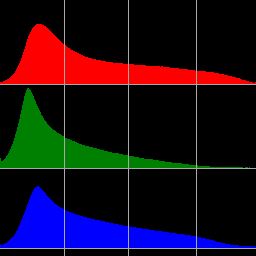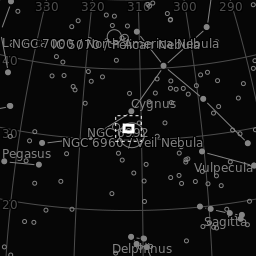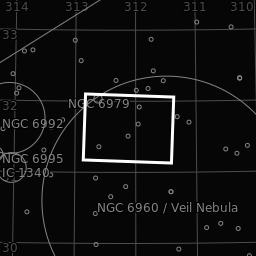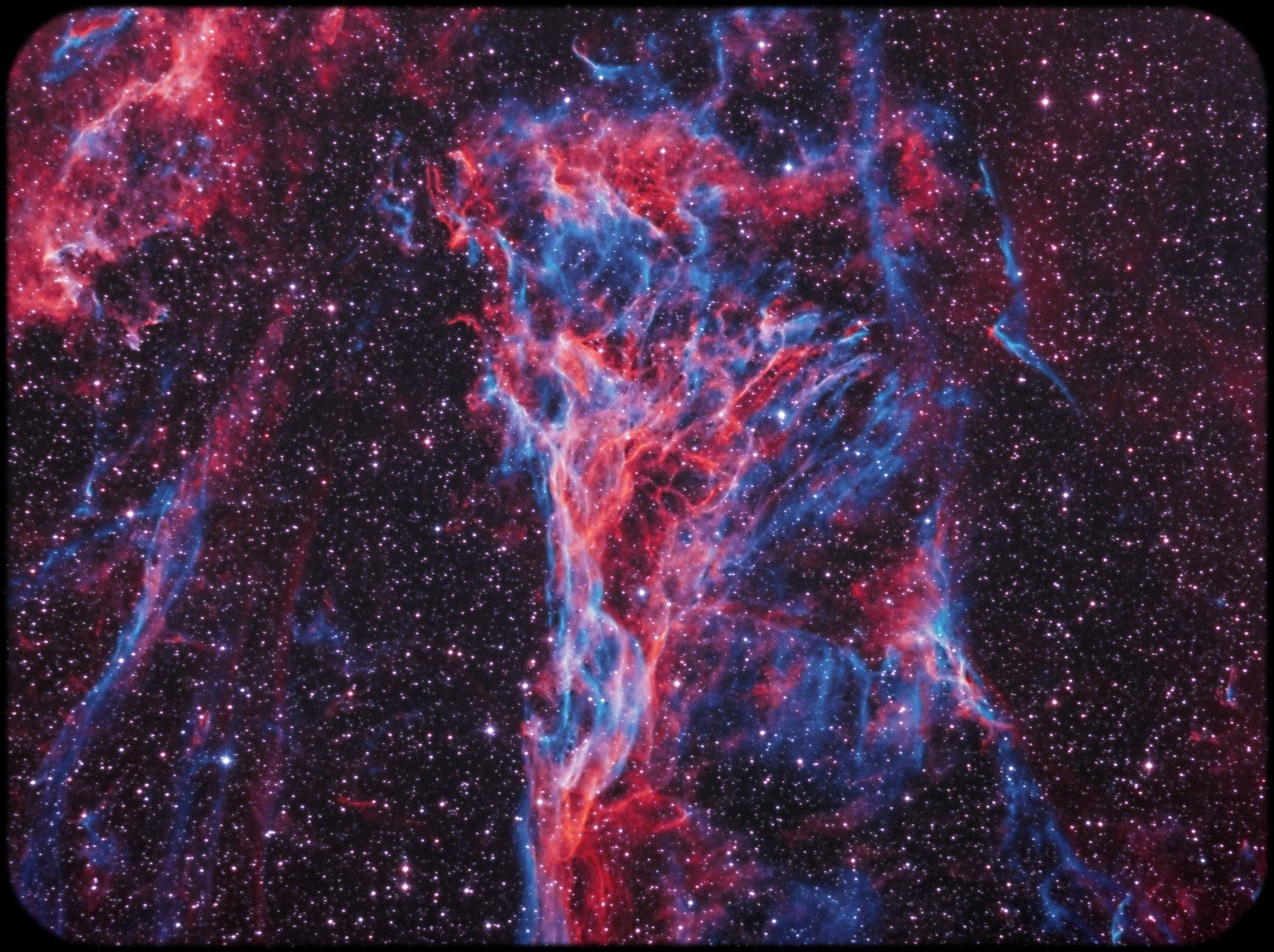HOO Tone Mapping process of Pickering's triangle, in Cygnus.
The names Veil Nebula, Cirrus Nebula, and Filamentary Nebula generally refer to all the visible structure of the supernova remnant, or even to the entire loop itself. The structure is so large that several NGC numbers were assigned to various arcs of the nebula. The brighter segments of the nebula have the New General Catalogue designations NGC 6960, 6974, 6979, 6992, and 6995. The easiest segment to find is 6960, which runs behind 52 Cygni, a star that can be seen with the naked eye. NGC 6992/5 are objects on the eastern side of the loop which are also relatively easy to see. NGC 6974 and NGC 6979 are visible as knots in an area of nebulosity along the northern rim. Pickering's Triangle is much fainter, and has no NGC number (though 6979 is occasionally used to refer to it)
At the estimated distance of 2400 light-years, the nebula has a a diameter of 130 light-years. [Wiki] |
|
|
| Optic |
SW Quattro 8S 200mm f/4 with Baader MPCC Mark III corrector |
| Camera |
Atik 383L+ |
| Filters |
Baader Ha, OIII, 36mm |
| Mount |
NEQ6 with EQASCOM
|
Guide
|
SW 70/500 with AlCCD5
|
Frame center
|
RA 20:48:28 DEC 31:37:02 J2000
|
Date
|
August 3030
|
Site
|
Astrobioparco di Felizzano, AL, Italy
|
| Exposures
|
Ha 20x900s bin 1x1 @-10C
Oiii 40x900s bin 1x1
Integration time - 15h
|
|



|
|















